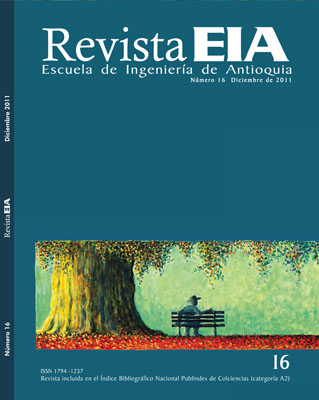MODELADO CONCEPTUAL DE USUARIOS EN AMBIENTES UBICUOS MEDIANTE AGENTES Y ONTOLOGÍAS (CONCEPTUAL USER MODELING IN UBIQUITOUS ENVIRONMENTS THROUGH AGENTS AND ONTOLOGIES)
MODELADO CONCEPTUAL DE USUARIOS EN AMBIENTES UBICUOS MEDIANTE AGENTES Y ONTOLOGÍAS (CONCEPTUAL USER MODELING IN UBIQUITOUS ENVIRONMENTS THROUGH AGENTS AND ONTOLOGIES)


This work is licensed under a Creative Commons Attribution-NonCommercial-NoDerivatives 4.0 International License.
Copyright statement
The authors exclusively assign to the Universidad EIA, with the power to assign to third parties, all the exploitation rights that derive from the works that are accepted for publication in the Revista EIA, as well as in any product derived from it and, in in particular, those of reproduction, distribution, public communication (including interactive making available) and transformation (including adaptation, modification and, where appropriate, translation), for all types of exploitation (by way of example and not limitation : in paper, electronic, online, computer or audiovisual format, as well as in any other format, even for promotional or advertising purposes and / or for the production of derivative products), for a worldwide territorial scope and for the entire duration of the rights provided for in the current published text of the Intellectual Property Law. This assignment will be made by the authors without the right to any type of remuneration or compensation.
Consequently, the author may not publish or disseminate the works that are selected for publication in the Revista EIA, neither totally nor partially, nor authorize their publication to third parties, without the prior express authorization, requested and granted in writing, from the Univeridad EIA.
Show authors biography
Este artículo presenta una propuesta para el modelado conceptual de usuarios en ambientes ubicuos mediante agentes y ontologías. La integración de estos dos conceptos permite descubrir, procesar y mantener la
información de los usuarios de sistemas pervasivos. La aproximación está compuesta por arquitectura conceptual, tipos de agentes que componen el sistema, estructura básica de cada agente y estrategia de comunicación. También se presenta una ontología para modelar usuarios y se mencionan dos escenarios de interacción de agentes: solicitud de conexión al sistema y envío de una consulta. Esta propuesta soluciona inconvenientes como la falta de estandarización en el modelado de usuarios de ambientes ubicuos y la ausencia de un componente inteligente que permita analizar dicha información para ofrecer configuraciones personalizadas dependiendo de datos como el perfil y las preferencias de los actores participantes.
Abstract: This paper presents a proposal for the conceptual modeling of user in ubiquitous environments through agents and ontologies. The integration of these two concepts allows capturing, process, and maintaining user information of pervasive systems. The approach consists of conceptual architecture, types of agents that compose the system, basic structure of each agent and communication strategy. It also presents ontology to model users. Later presents two scenarios of interaction of agents: connection request to the system and sending a query. This proposal solves problems such as lack of standardization in the user modeling of ubiquitous systems and the lack of intelligent component for processing the user’s information to offer personal configurations that depend of the users' profile and preferences.
Article visits 326 | PDF visits 148
